Moorish architecture, fiery flamenco and tasty tapas: Read how to make the most of a weekend in Seville with my Top 7 things to do.
Why take a Weekend in Seville?
Seville is the capital of Andalucia, the southernmost region of Spain. This region is often described as the most quintessentially Spanish – being the home of flamenco, sherry and bull fighting. But it is the Moors, who arrived in the 8th century, and stayed put for around 700 years, who left the most striking legacy.
While Seville is Spain’s fourth largest city, it is easy to see the main sights on foot. The city is divided into distinctive barrios (quarters). The most important sights to see on a weekend in Seville are found in the historic district of Barrio Santa Cruz: The Alcazar, Cathedral and Giralda. This is part of the old city, on the east bank of the river.
The Moorish legacy is still very evident in Seville, with its intricately decorated monuments, orange trees, flower-filled courtyards, tranquil pools and trickling fountains. It adds a touch of romance, whatever your reason for a weekend in Seville.
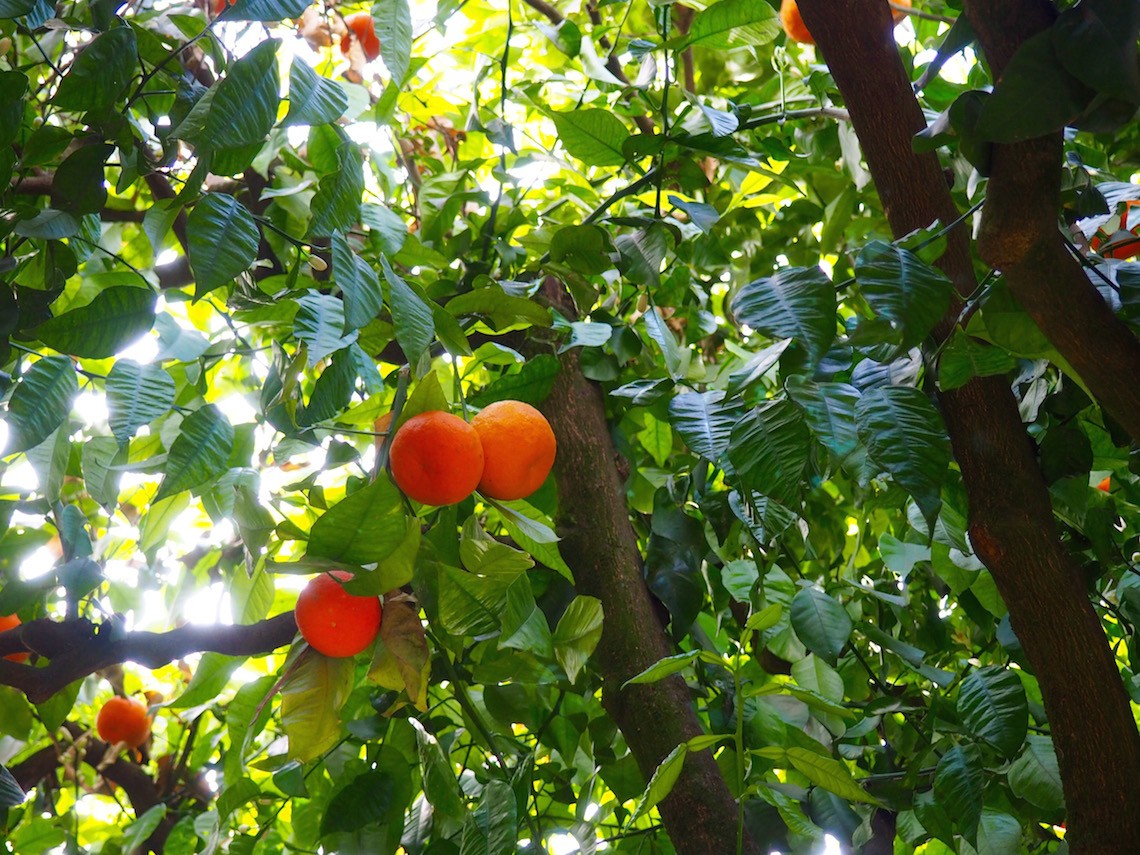
Take a look at this video showing the highlights of Seville
© All Aboard the Skylark 2017
Did you know?
- Seville is home to both the largest church and largest wooden structure in the world
- Carmen, the opera, is set in Seville
- It has the most orange trees of any city in the world
- Game of Thrones, Star Wars and Lawrence of Arabia were filmed here
- It is claimed that Seville invented tapas, flamenco and bull fighting
Top 7 things to do on a weekend in Seville
1) Walk the back streets
Taking a wander through the streets of the Barrio Santa Cruz is a must. This medieval Jewish quarter has an atmosphere all of its own, with winding alleys and colourful buildings. Many of the windows are fitted with iron grilles and potted plants. Keep your eyes open and don’t forget to look up.
West of Santa Cruz, Barrio El Centro is the main shopping area including the pedestrianised Calle Sierpes. On the other side of the river, Barrio Triana is a lively neighbourhood, once home to the great flamenco dynasties of the city.
Skylark suggests: Forget social norms and take a peek through open doorways in the back streets of the Barrio Santa Cruz, often revealing flower filled courtyards within.
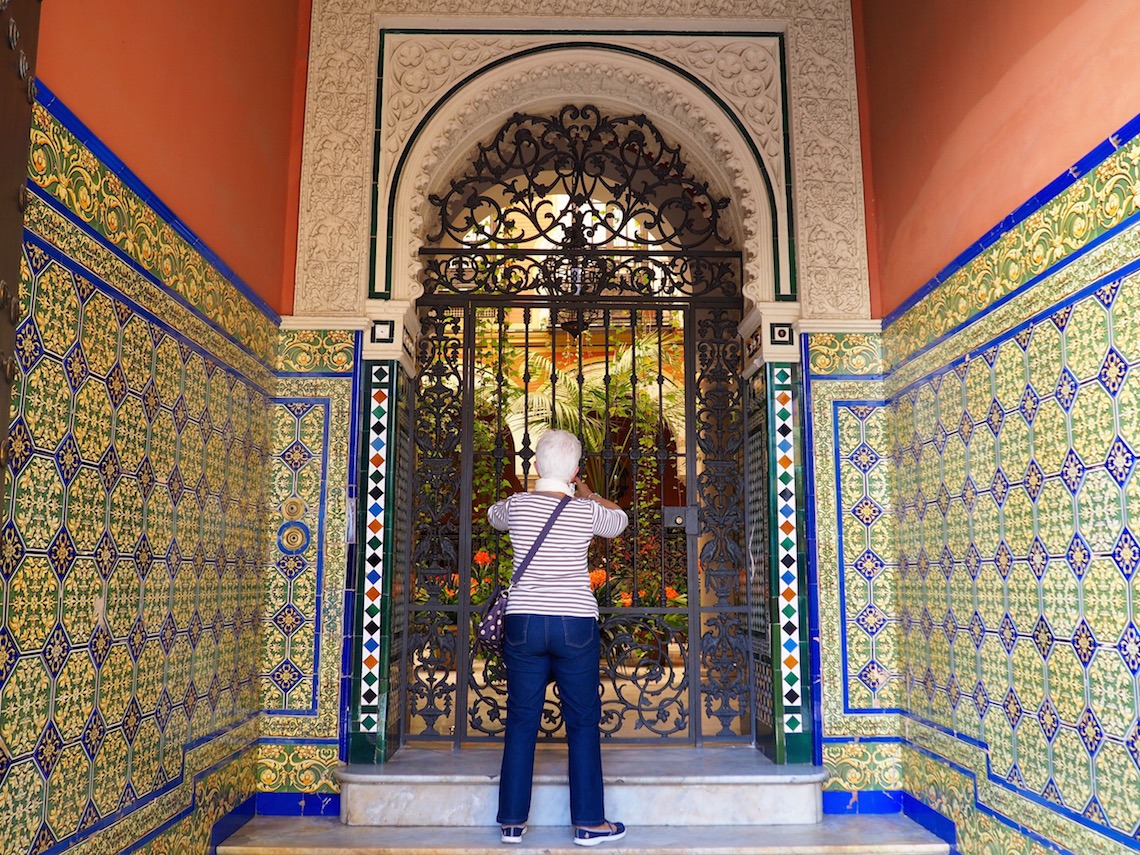
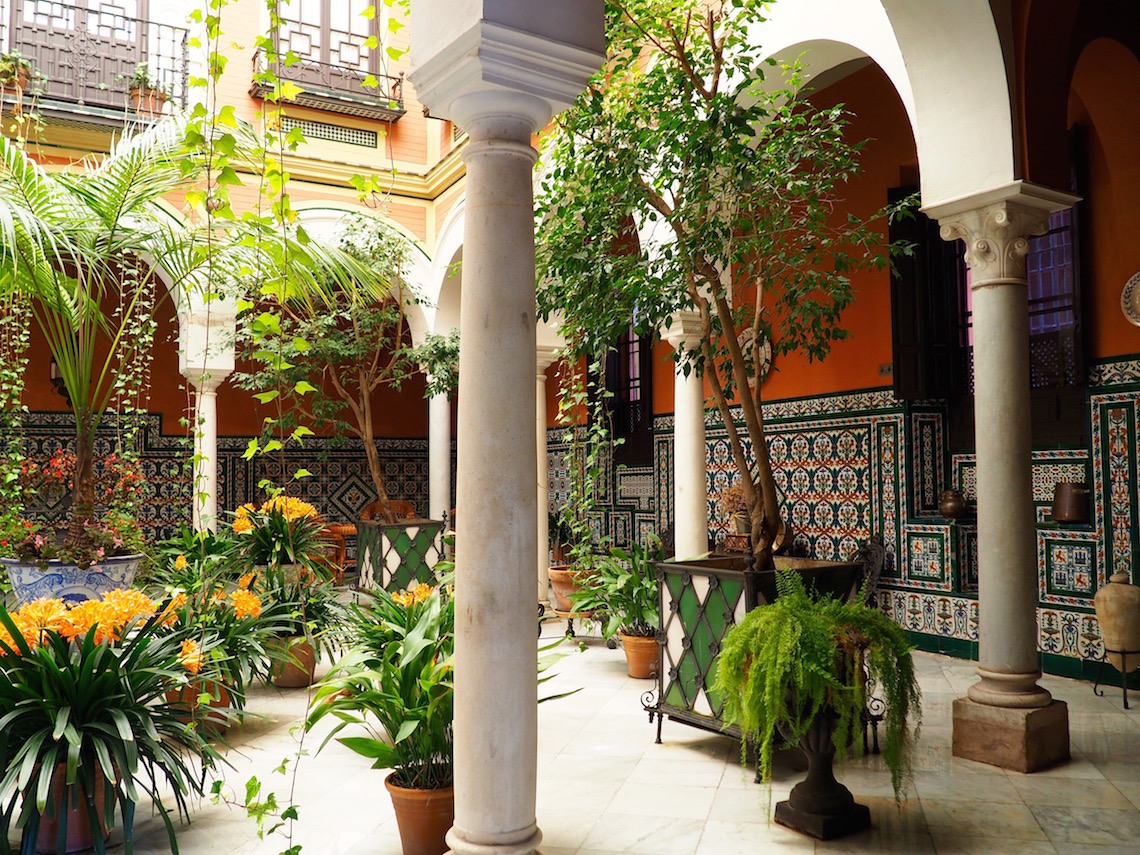
2) Visit Seville Cathedral
Seville Cathedral is the largest church in the world. It is an impressive place to visit, not just because of its sheer scale, but for the beautiful artworks and carved detail inside. If you’d like to pay homage to one of history’s most famous explorers during your weekend in Seville, visit the Mausoleum of Christopher Columbus. Although legend has it, it may, or may not, still house his remains. It’s quite a tomb, nonetheless.
Skylark suggests: It’s a good idea to pre-book tickets to the Cathedral. It will often have very long queues. For my Skylark Secret Tip on how to beat the queues, carry on reading to the end.
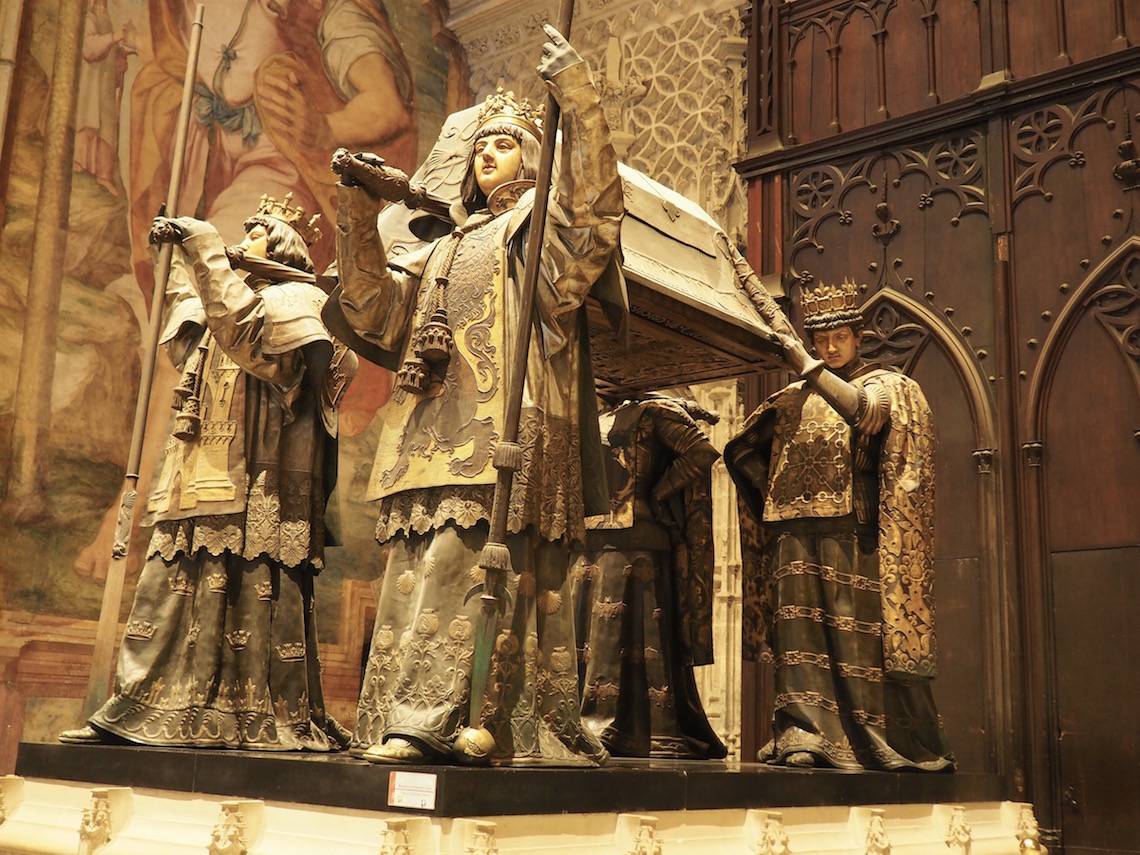
3) Climb the Giralda
Seville Cathedral was built on the site of a mosque that stood there before it. The only part of the mosque that remains is the minaret. This was cleverly converted into a bell tower – La Giralda. It’s definitely worth the climb for the incredible views of the city from the top.
The entrance to the Giralda is in the Cathedral. But rather than having to climb hundreds of steps, this one has a series of 30 or so ramps. It makes for a slightly gentler climb. There are stop offs en route if you need a breather, or want to admire the view as you go.
Skylark suggests: If you’re up the top of the tower, on the hour (like I was at 12 o’clock), beware of the clanging bells right over your head.
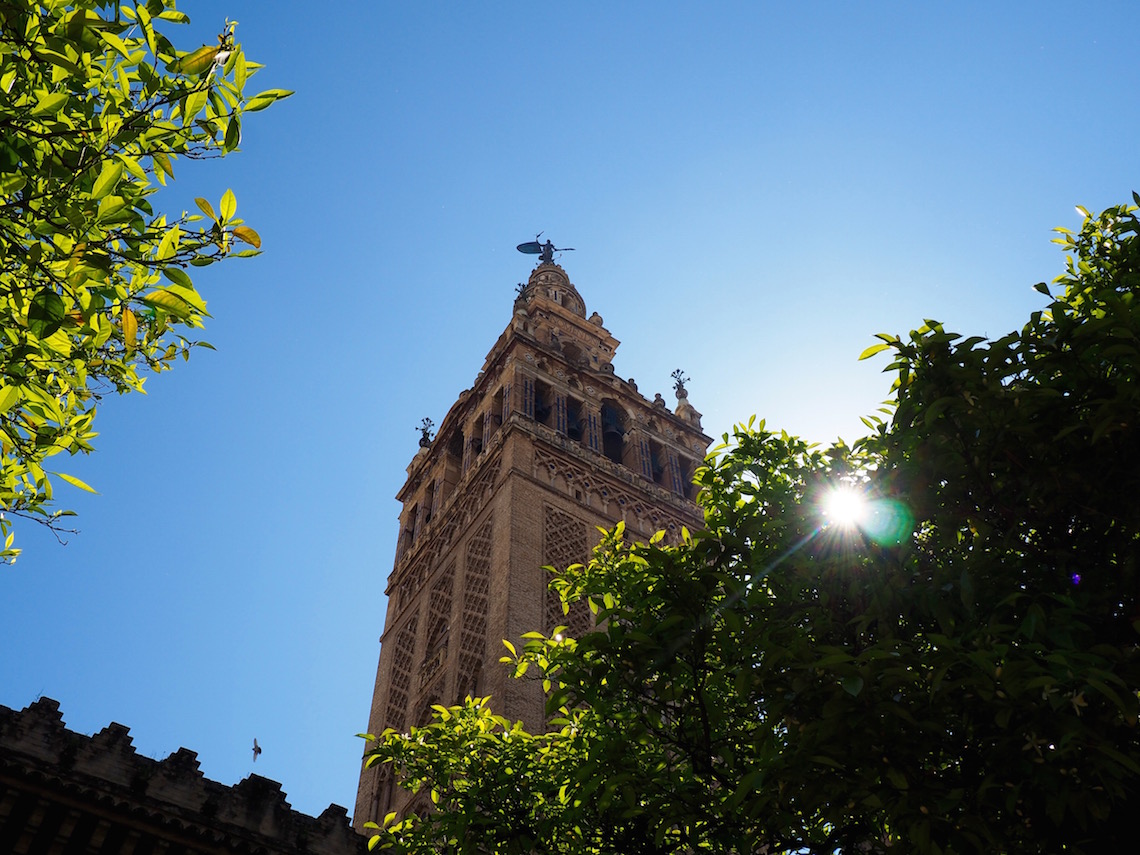

4) Lose yourself in the Real Alcázar
Close to the cathedral is the Alcazar (‘Real’ meaning royal, not real). It is one of the oldest Spanish royal palaces still in use. Like most of the city’s historic landmarks, this magical, fortified palace has a mix of Moorish and Christian influences. I’d recommend devoting a few hours of your weekend in Seville to explore this thoroughly.
The Real Alcazar is one of the most important buildings in Spain, having been home to monarchs and major historical events affecting the whole world. The first geographical map of the New World was drawn here and Magellan’s first circumnavigation of the world was planned.
The Patio de las Doncellas, at the heart of the palace, was named in tribute to the hundreds of virgins presented to the Moorish kings. I loved the tranquil air of the patio. It has recently been reinstated to its 14th century layout, with a central pool lined by trees. A design apparently originally intended to recreate paradise.
The pool reflects the intricate façade with its geometric motifs and Kufic inscriptions. If you’re a fan of Moorish tiles, like me, there are some magnificent ones here. While you may think they are purely decorative, they are actually an expression of a philosophical principle revealing divine beauty (who knew?)
Other highlights of the Alcazar include the celling of the Sala de los Infantes, the golden dome of the Salon de los Embajadores (representing the celestial sphere) and the tiles in the Sala de las Fiestas (location of the wedding of Emperor Charles V to Isabella of Portugal).
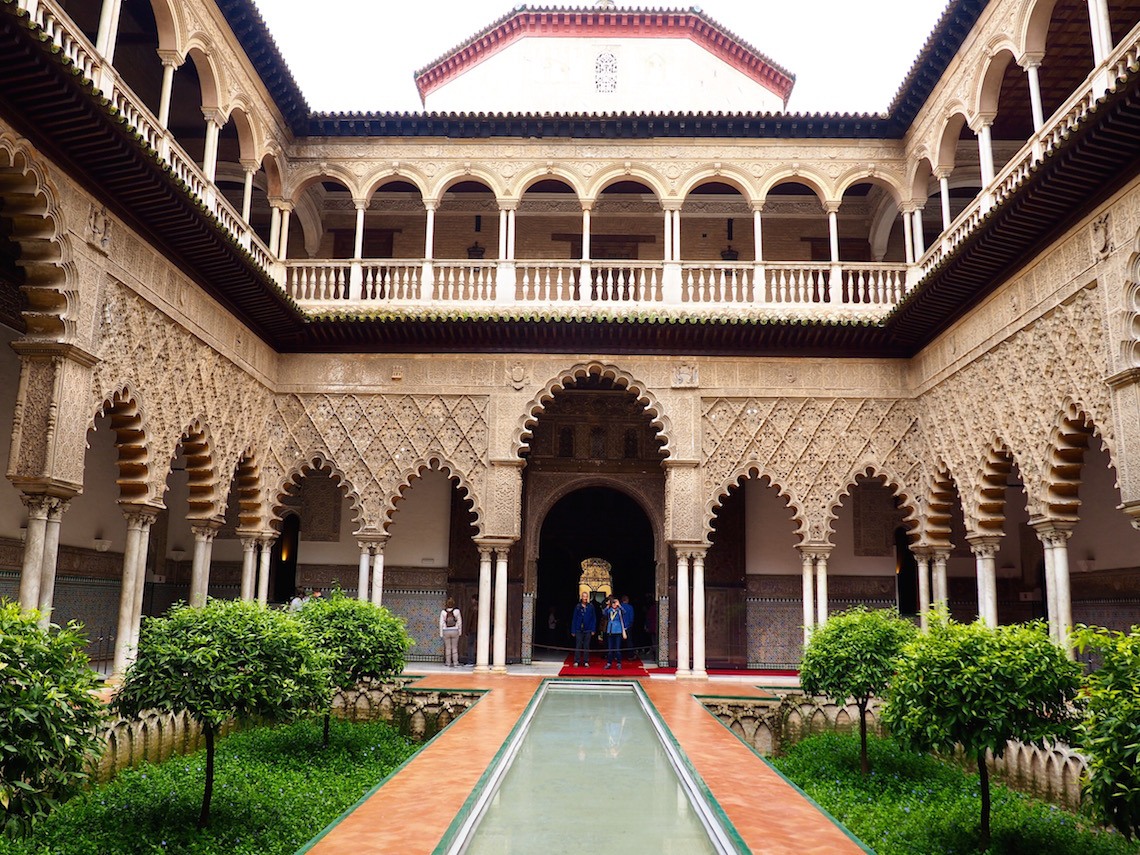
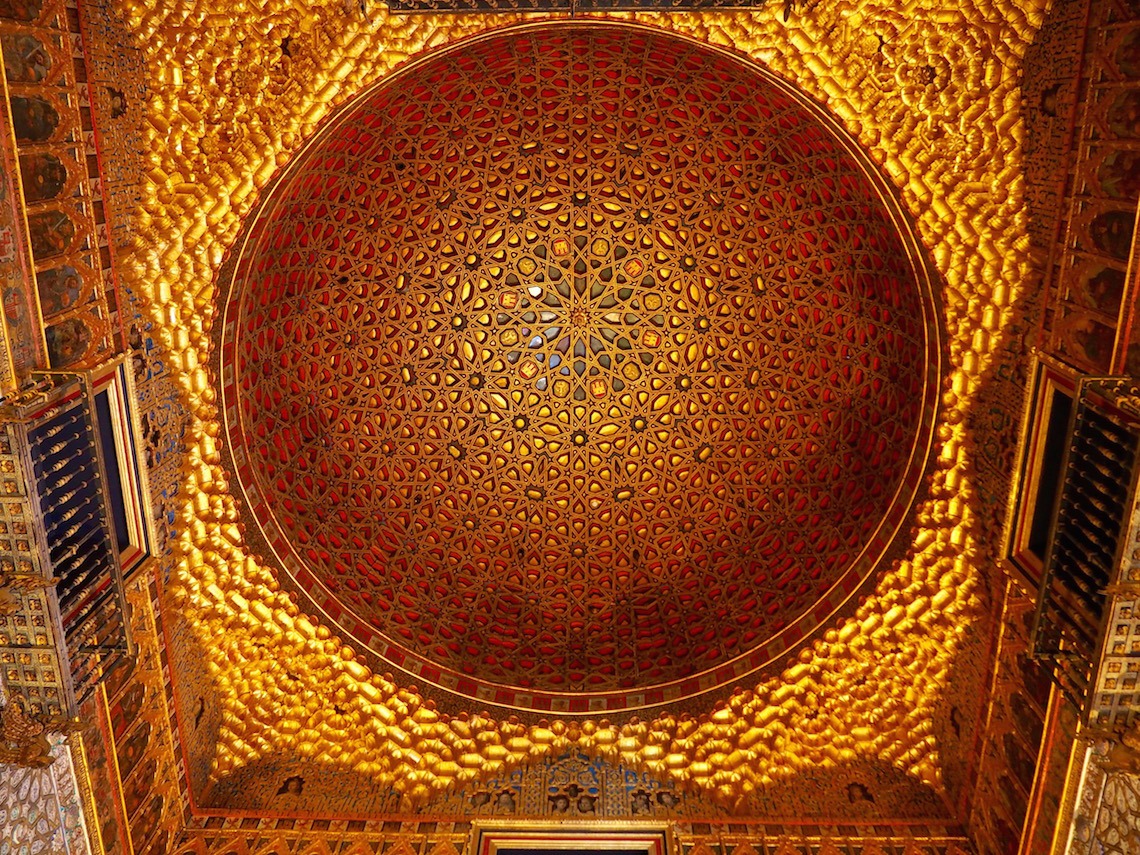
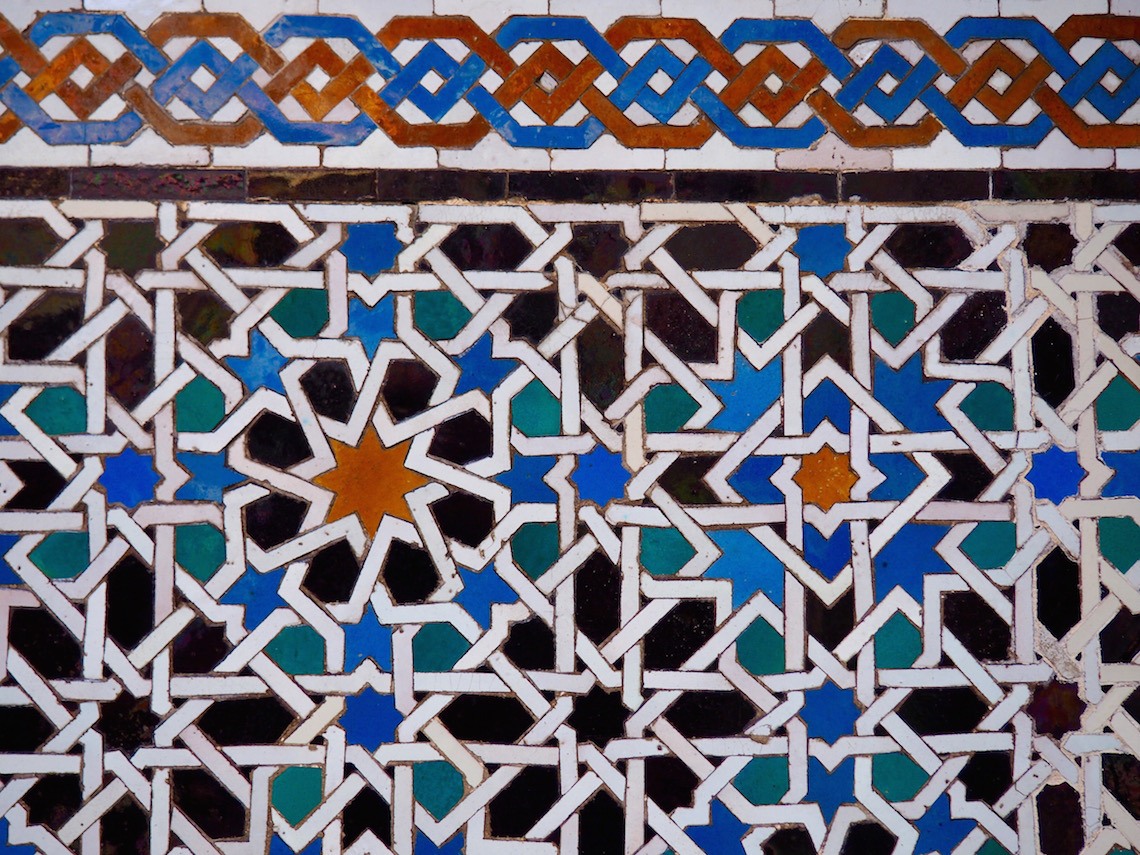
Step outside and the gardens are a delightful oasis, filled with orange trees, flowers, tranquil pools and the cries of peacocks.
The orchards here not only supplied food for the residents, but also fulfilled an aesthetic function: to bring pleasure to all five senses. And these gardens sure did to mine.
One of the great Italian artists, Vermondo Resta, left his Itallianate mark on the gardens. He transformed the old Muslim wall into a loggia from which to admire the views: the Galeria de Grutesco. Amongst the gardens, you will also find a maze, fountains, pools and an outdoor café (I can recommend their almond cake).
Skylark suggests: It’s a good idea to pre-book tickets to the Alcazar. It is one of the most popular sites in the city and visits are by timed entry. If you can, plan to arrive early in the day to avoid the crowds.
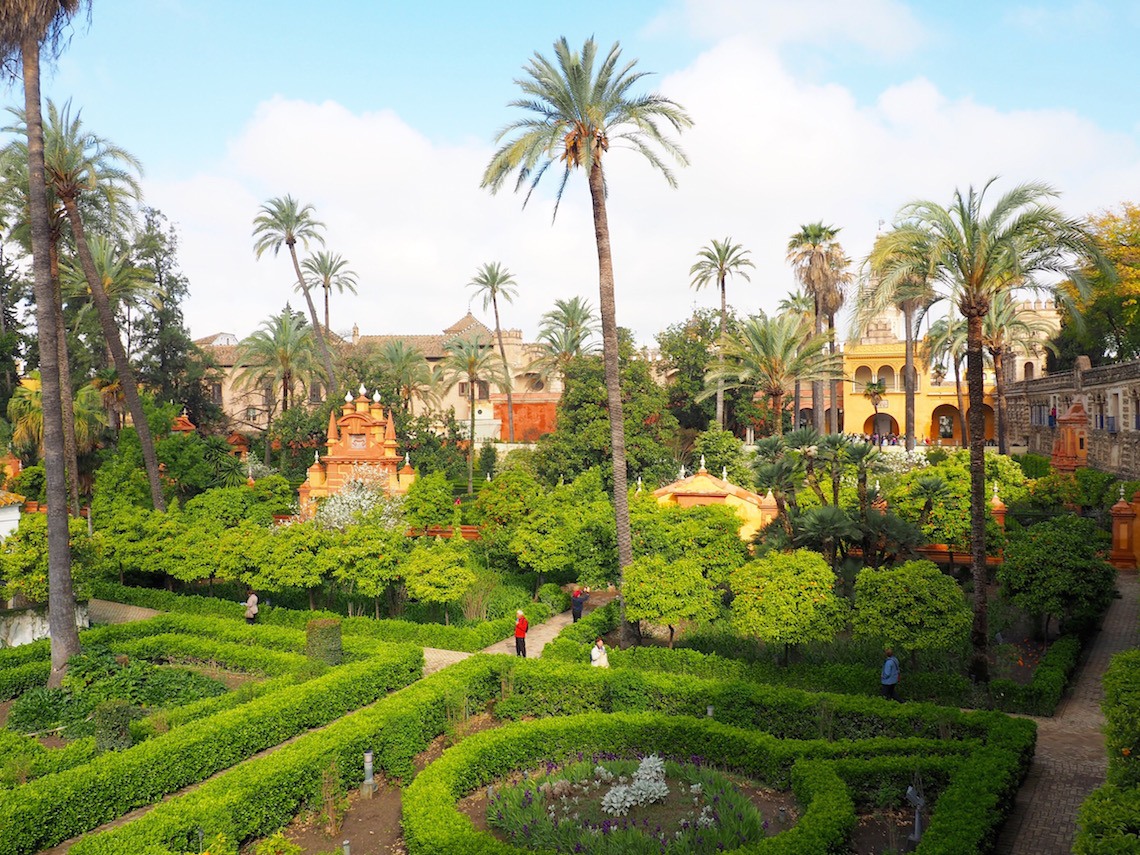
5) Climb a giant mushroom
As a complete contrast to the historic architecture of the Cathedral and Alcazar, if you find yourself in the shopping area of El Centro, it is worth seeking out the Metropol Parasol, known by Sevillanos as Las Setas (mushrooms).
The largest wooden structure in the world resembles giant waffles in the shape of mushrooms. It also incorporates a walkway across the top, a shopping centre, market, restaurant and a museum containing Roman ruins.
I ask myself, should this distinctive, contemporary piece of architecture have been squeezed into a historic square of Baroque façades? I’m all for modern architecture, but I may need a little more convincing.
Skylark suggests: Metropol Parasol is more than just a piece of art; take the lift to the walkway on top, for magnificent views over the city.
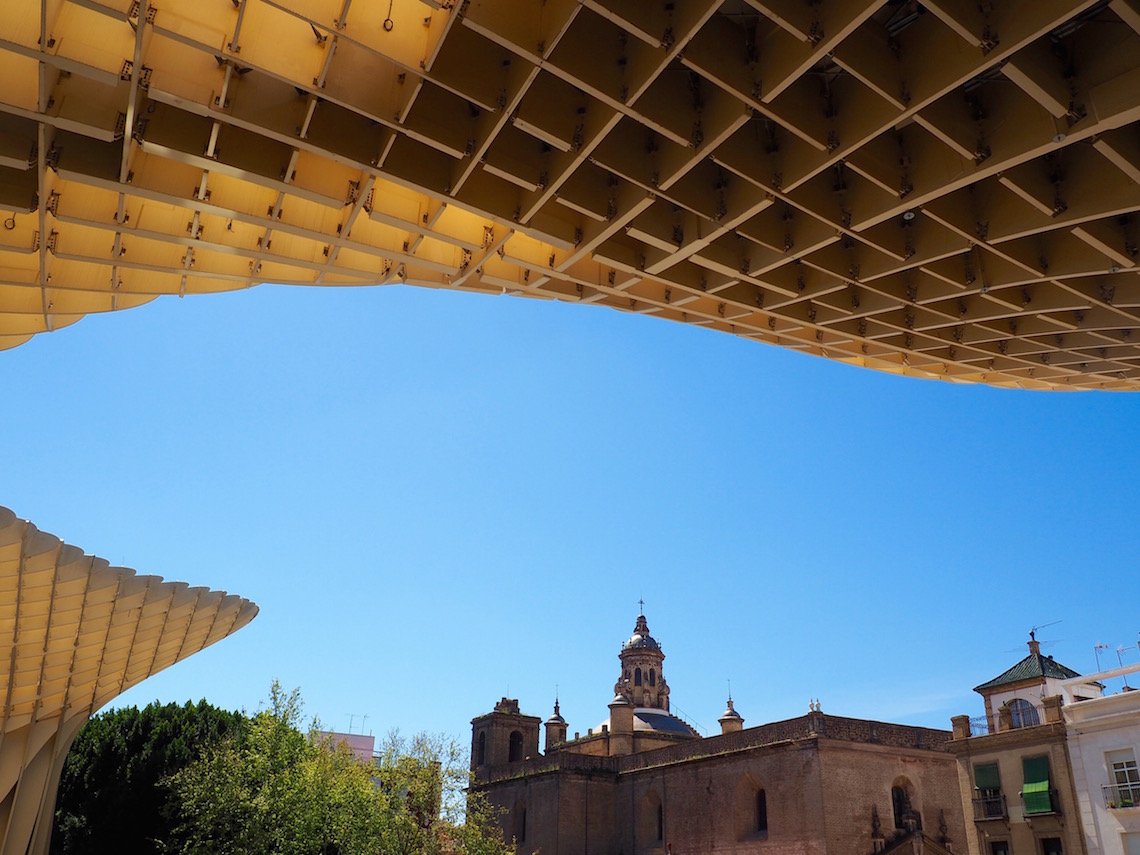
6) Stroll through the Plaza de Espana
A walk out of the centre will take you to the Plaza de Espana, built as the centrepiece for the Expo in 1929. It features a canal crossed by small bridges, winding around a plaza, in front of a semi-circular renaissance style building.
Visitors from all over Spain come here to have their photo taken in one of 48 alcoves representing all the provinces of Spain. The Plaza reminded me somehow of a Vegas version of Venice, but not in a tacky way. I loved the colourful tiles, painted ballustrades and matching lampposts.
Skylark suggests: If you have time, rent a boat on the canal. Go on. Why not? It is the Vegas version of Venice after all.
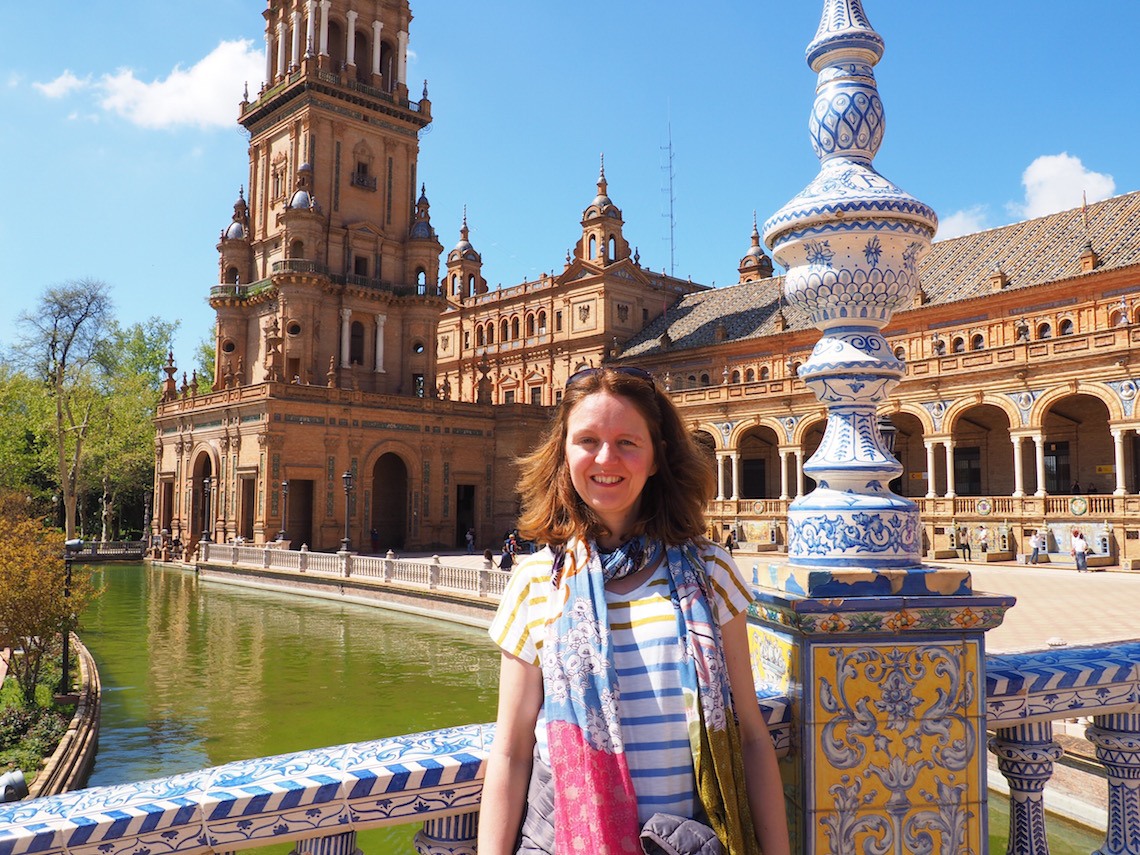
7) Uncover the secrets of Flamenco
Don’t leave without a taste of this most traditional of Spanish dances during your weekend in Seville. Even if you don’t love dance, this historic art form is woven into the cultural fabric of the city.
The chances are, if you stroll the streets after dark, you will hear the strains of Spanish guitar or hear the rhythmic stamping of feet. But to uncover the secrets of flamenco, visit the Museo del Baile Flamenco. The museum of flamenco takes you through the origins of this dramatic dance form. It also has its own small theatre for nightly shows.
It was here, Sangria in hand, I experienced the true magic of Seville. I was enthralled, moved and completely mesmerised by the passionate performance unfolding before my eyes.
Skylark suggests: Pre-book a flamenco show to avoid disappointment. There are a couple of performances a day at the Museo del Baile Flamenco. To get to the heart of the action, find a seat right by the stage about an hour before the show starts.
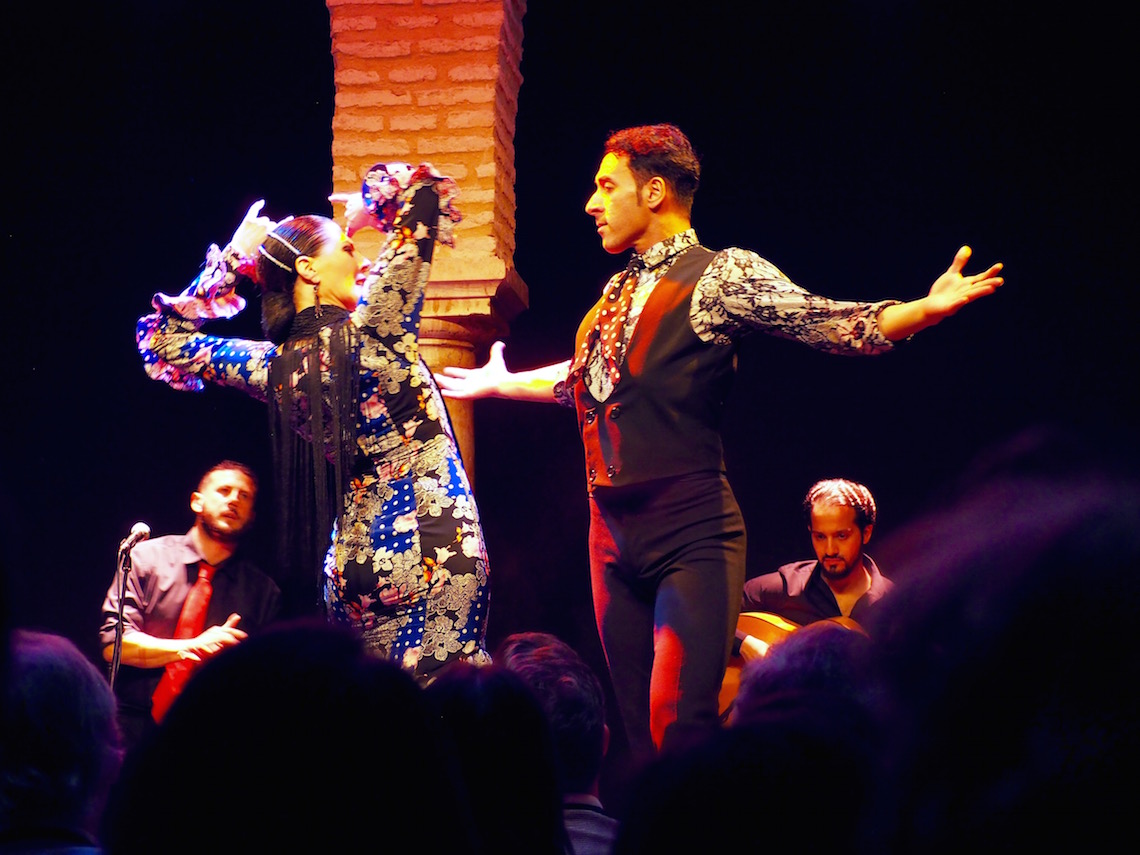
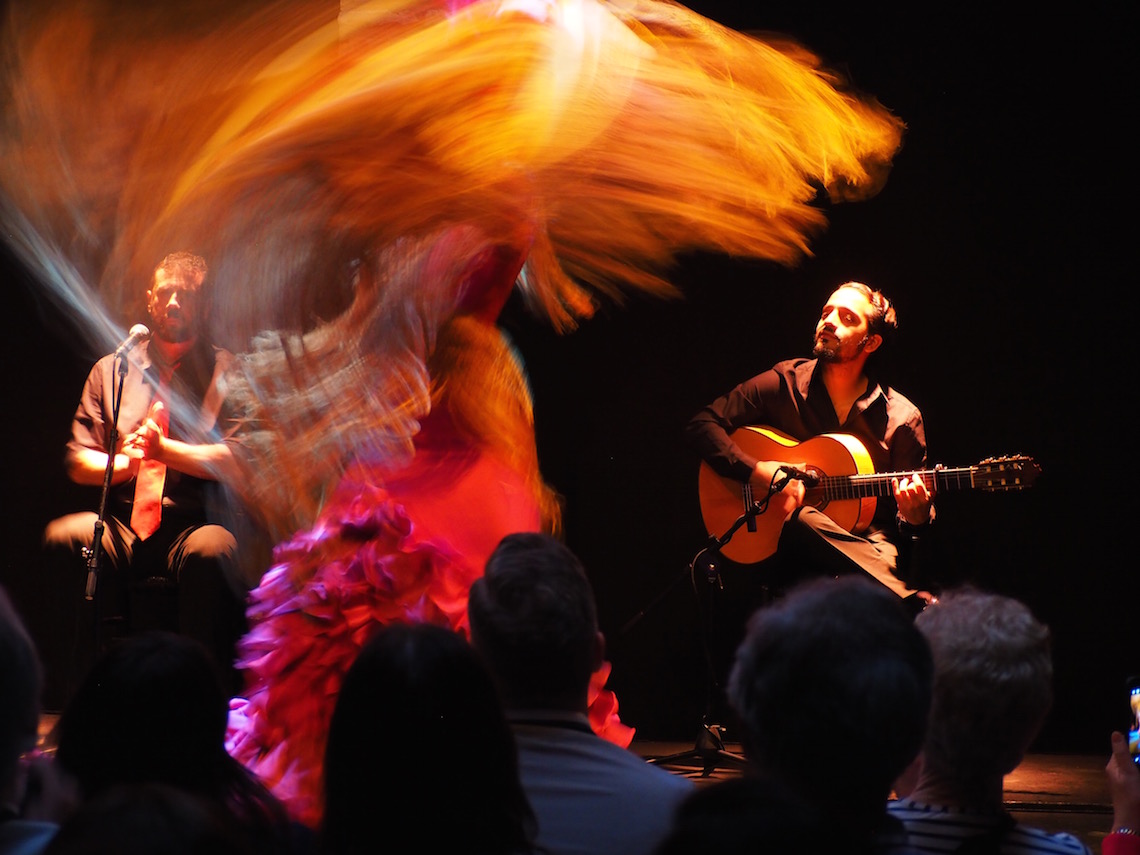
NB Like most cities in Spain, Seville has its own bull-fighting arena. The reason this list is a Top 7, rather than Top 8, is because of my own moral compass. I didn’t want to see or give money to anything bull-fighting related. But I completely understand this is a personal choice.
Places to eat in Seville
Seville is the city that claims to have invented tapas. The traditional way to eat it is standing up, moving from bar to bar. But there are plenty of seats on offer for those who have spent all day walking the streets. I was pleased to discover drinks are cheaper than in the UK. The traditional accompaniment to tapas is a glass of dry fino sherry or beer. But Spanish red wine and sangria are great options too.
As night falls, Sevillanos take to the streets. Tapas bars and restaurants fill with people, spilling out onto the pavements where tables and chairs are set outside. You might see a band playing outside a bar, or hear the sounds of flamenco.
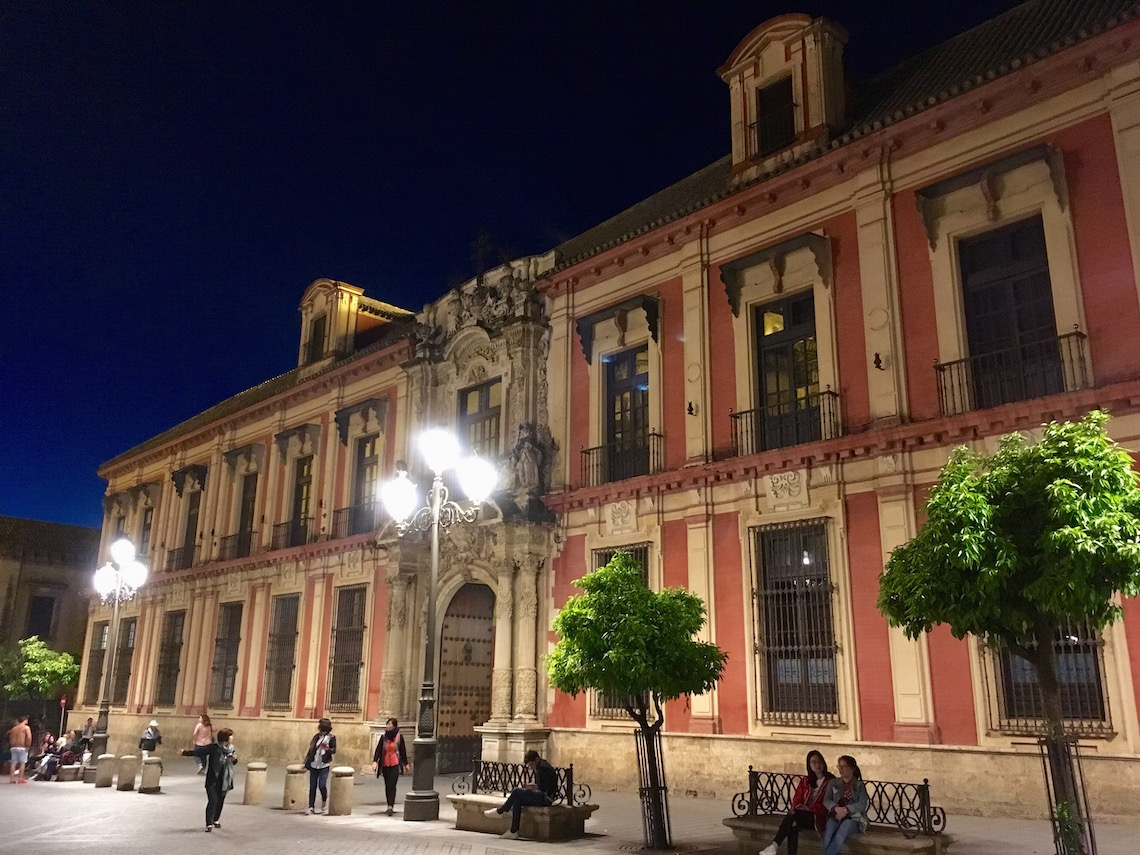
C/ Mateos Gago, one of the roads leading to the Cathedral, has loads of restaurants and tapas bars along it. One of my favourites along here is Bar Patanchon. I enjoyed thin slivers of Iberico ham, cheese croquettes, paella, patatas bravas and bacalao (salt cod) in tomato sauce, amongst others. Tapas dishes cost around 3 or 4 Euros and a glass of wine or sangria is around 2.50 Euros.
A good lunch stop, near the Cathedral, is Pelayo Bar on C/ Placentines. Although it’s located in a tourist hot spot, it has a traditional feel about it, and friendly staff.
For an authentic, standing, tapas experience, head to El Rinconcillo on C/ Gerona. This is Seville’s oldest bar and full of hustle and bustle. It is well known for its jamon, and specialties such as chickpeas and spinach or salt cod in onion sauce.
If you have a sweet tooth, look out for the pastelerias along Calle Sierpes. La Campana is one of the most famous of these and fantastic for ice cream or pastries.
Skylark suggests: Locals eat later in Seville than they do in the UK. Don’t head out for dinner until around 8.30pm, if you want to find any atmosphere.
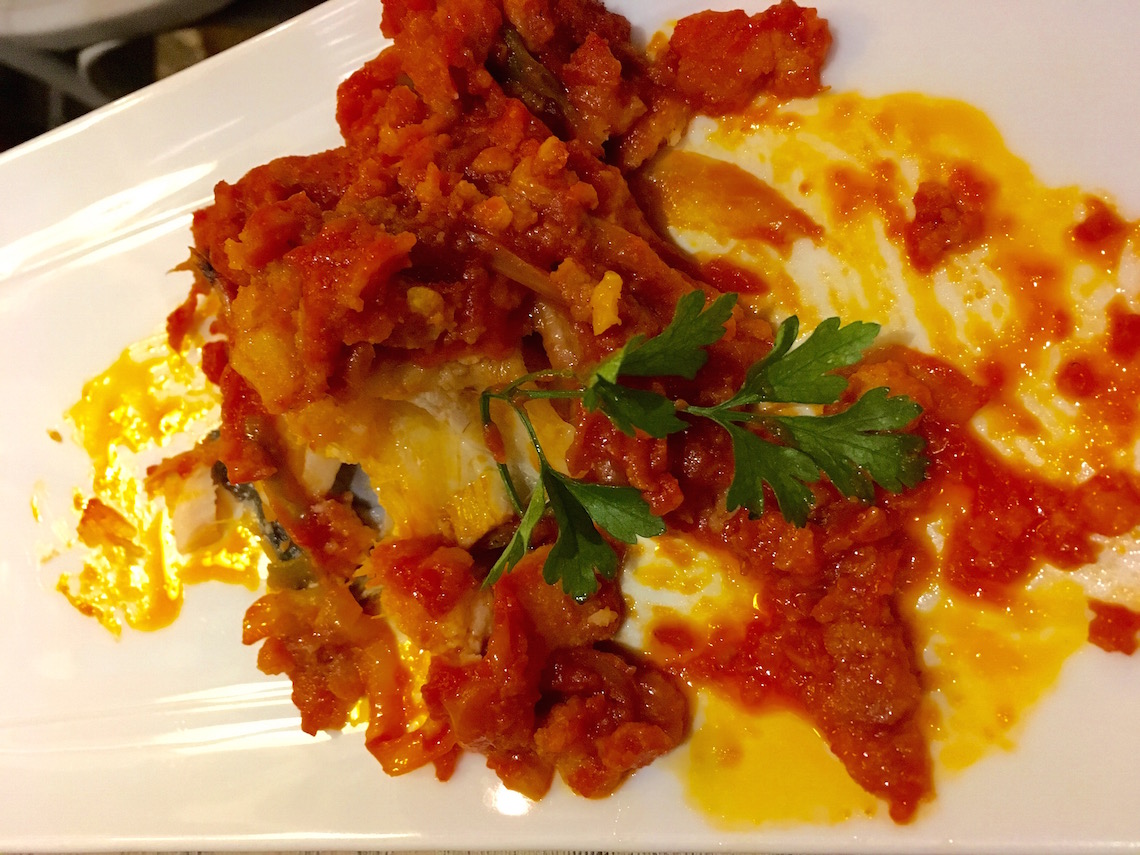
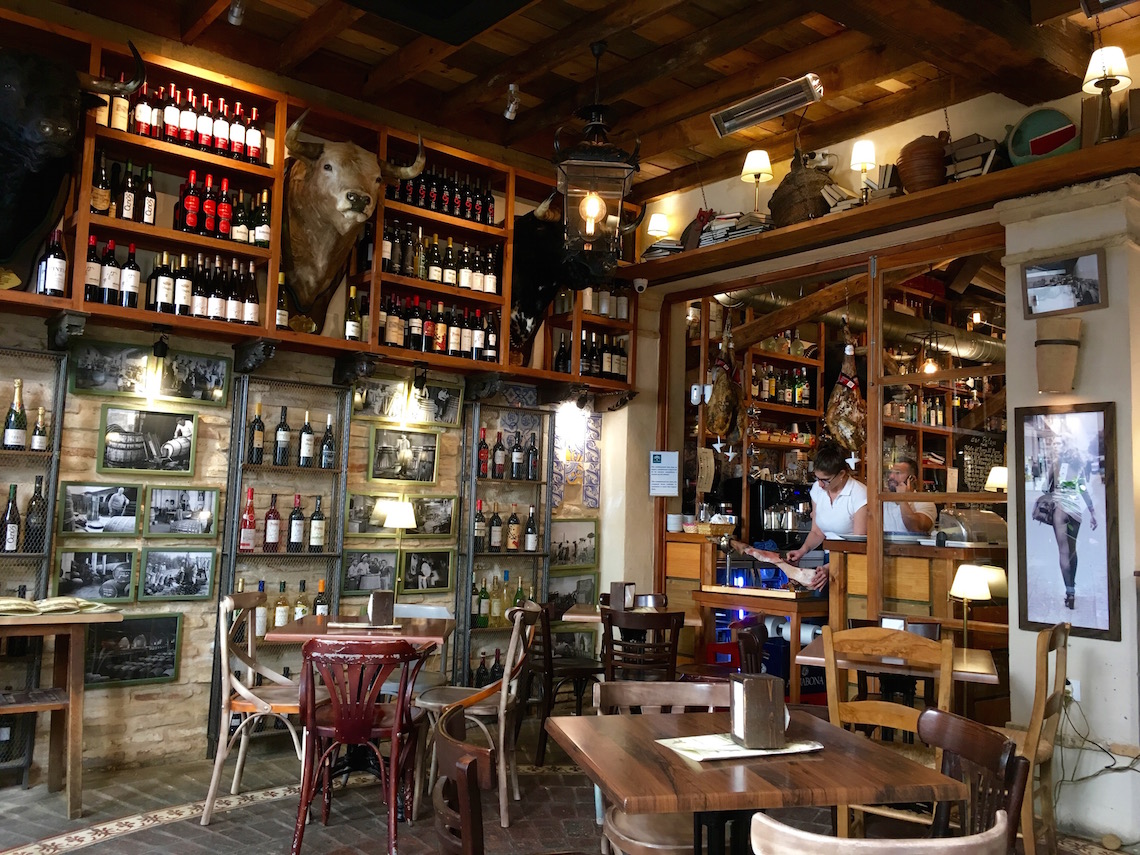
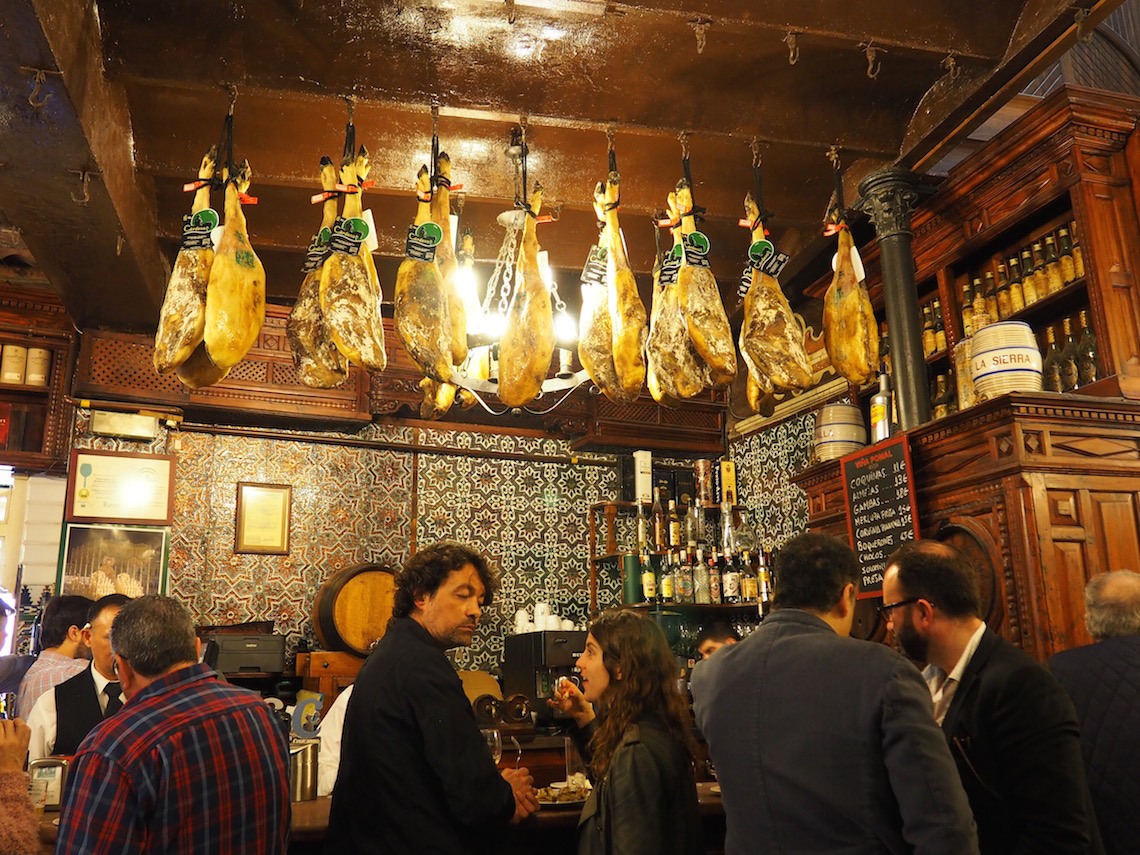
Where to stay in Seville
For sightseeing and atmosphere, the Barrio Santa Cruz is the best area to stay in. There are loads of hotels to choose from, but I stayed at Hotel Las Casas de la Juderia.
This hotel is full of character and located in the old Jewish quarter. It is made up of a collection of 27 houses linked together by plant-lined alleyways and flower filled courtyards. When you check-in, you get a map – it’s hard not to get lost! Rooms are furnished in a traditional style.
During the summer months, a rooftop pool terrace offers lovely views of the surrounding rooftops, across to the Giralda. Unfortunately I stayed too early in the year for the pool to be open. The Roman bath inspired spa, underground, provides a lovely place to relax after a busy day of walking around the city.
A good choice is available for the buffet breakfast, which is taken in the ancient cooler rooms, where the former inhabitants would have stored their food.
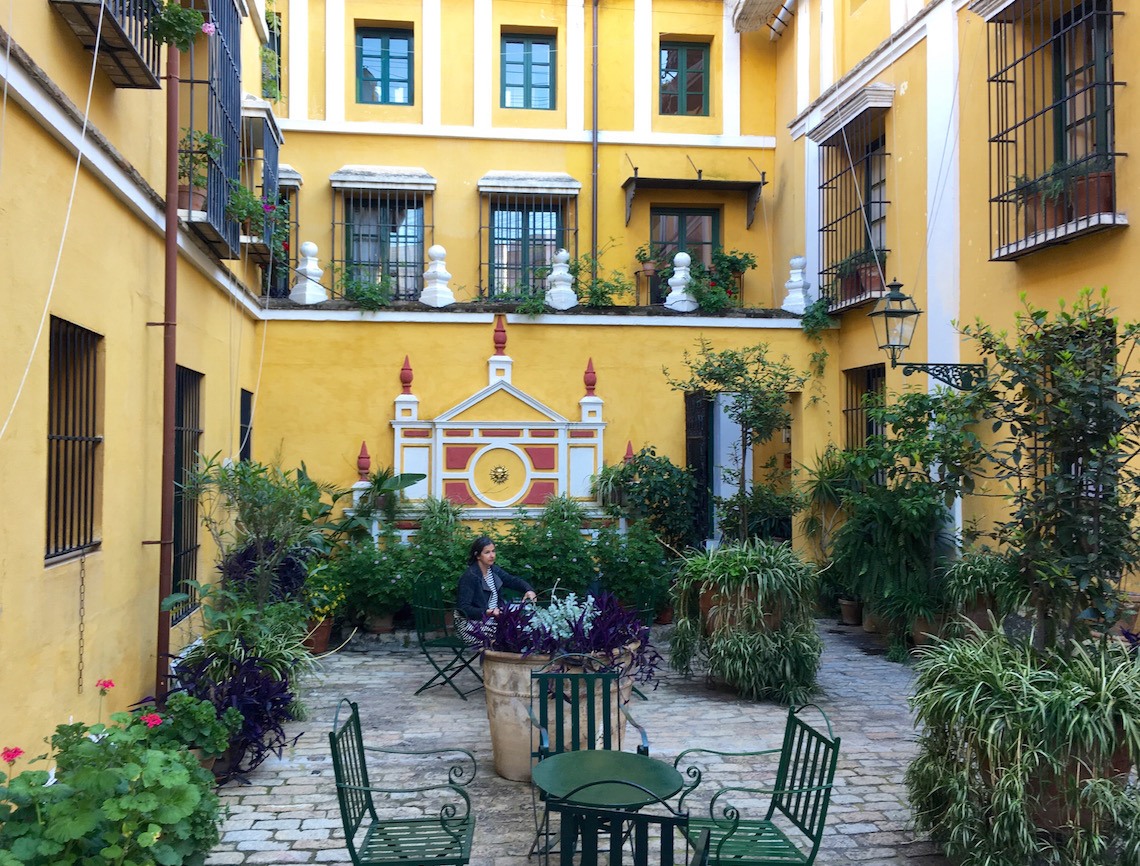
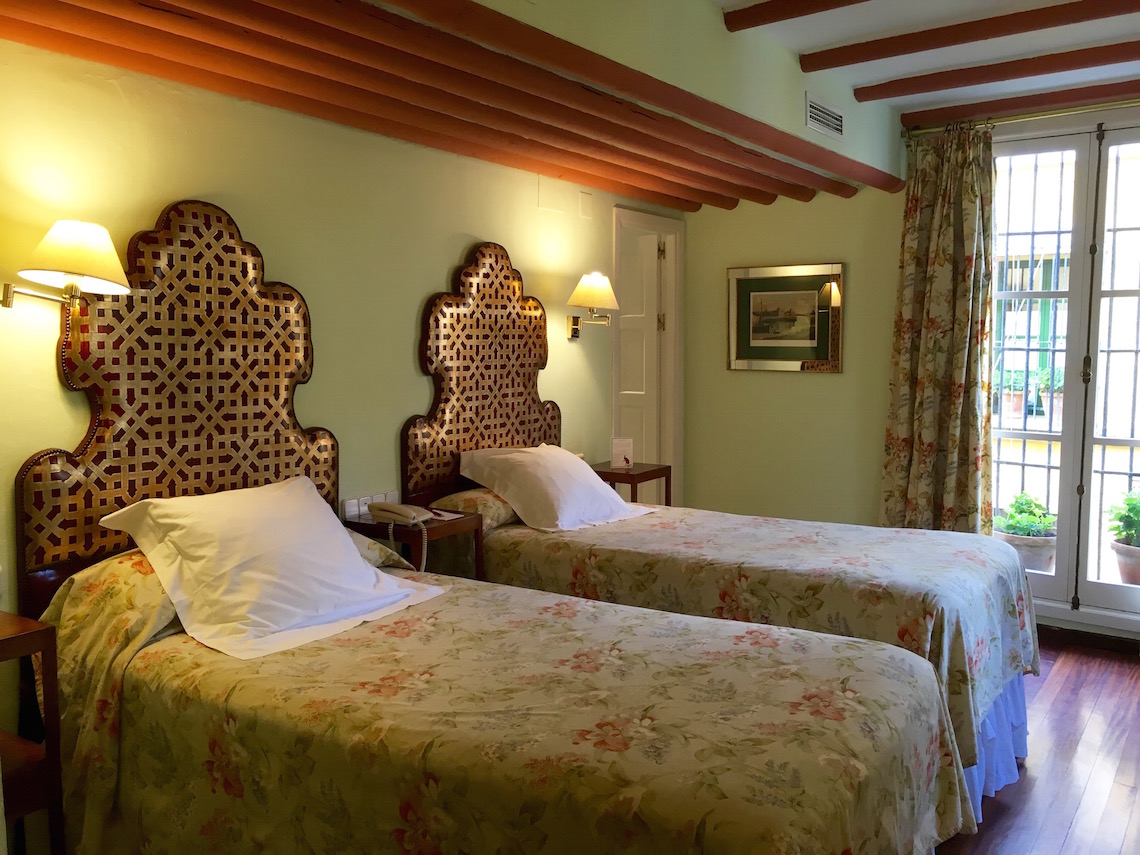
Know before you go
British Airways fly five times per week from Gatwick to Seville
EasyJet fly daily from Gatwick to Seville
Iberia fly daily from Gatwick to Seville
If you’d like to book a combined trip with Cordoba and Granada, Inn Travel offer a great tour by train.
On arrival in Seville, a taxi to the city centre costs around 30 Euros. The bus costs around 4 Euros per person.
Semana Santa (holy week) takes place in March or April, depending on the timing of Easter. Elaborate processions make their way through the city streets towards the Cathedral.
Feria de Abril takes place two weeks after Easter. It is the biggest fair in Spain and a week-long celebration running all day and all night.
Vela de Santa Ana takes place in Barrio Triana towards the end of July and includes competitions, gastronomy and free flamenco performances.
Skylark’s Secret Tip – If you’re planning on visiting Seville and would like to know a great way of beating the queues in Seville Cathedral, subscribe to my blog and request my secret tip in the comments below.
Pin for later
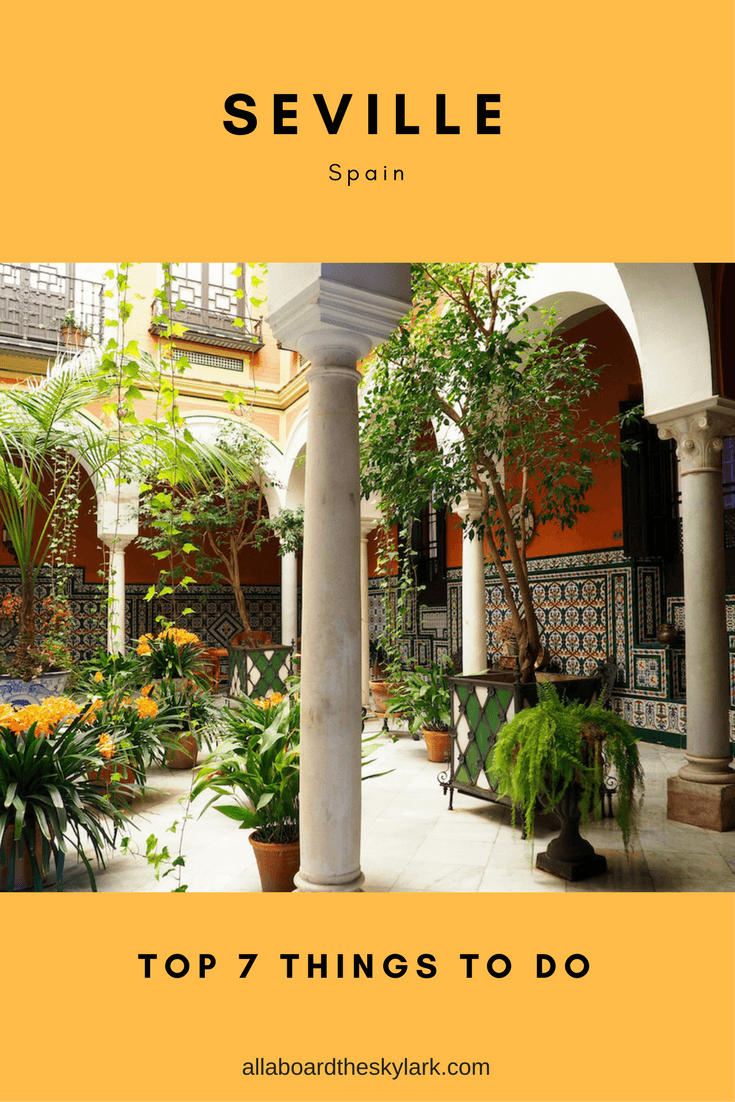
I’d love to go back to Seville and explore further. If you have any great suggestions that I haven’t mentioned here, I’d really like to hear about them.

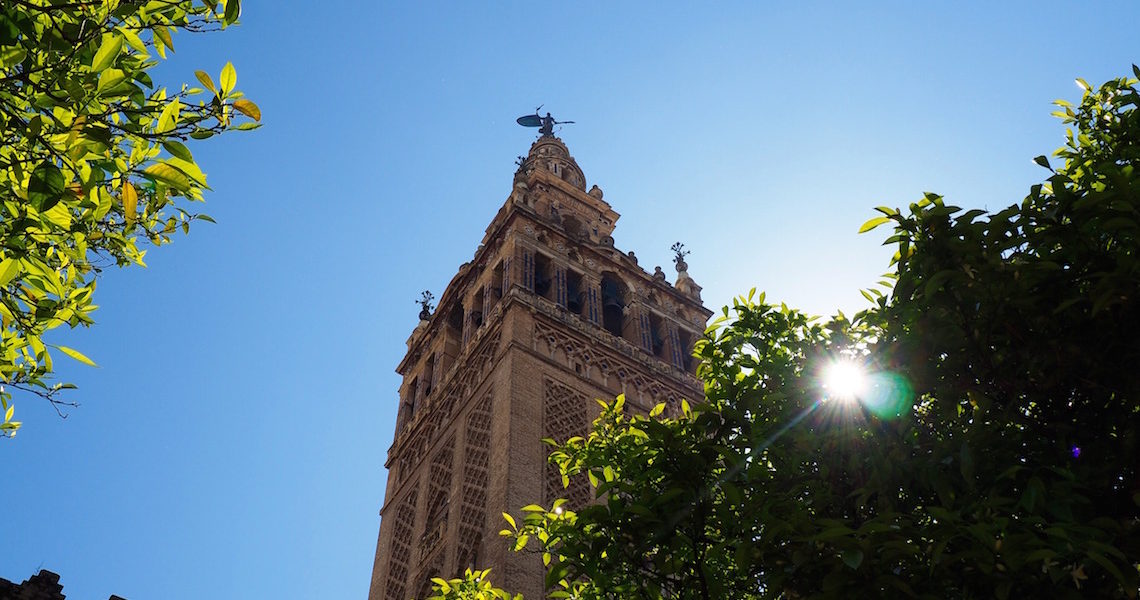
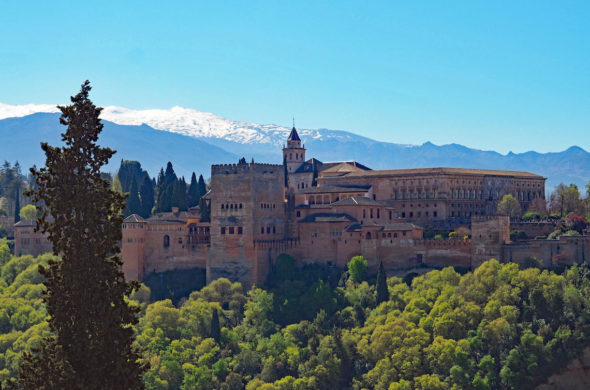
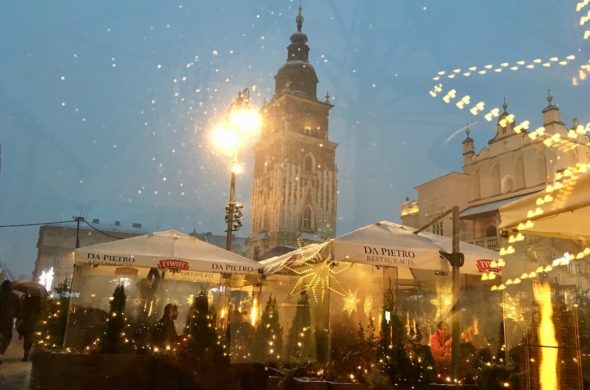
Lucy
May 17, 2017We ate in Pelayo Bar too! Loved the tapas culture of eating and drinking our way around in the evenings, and such an atmospheric city.
Skylark
May 17, 2017That was a good find, Pelayo Bar! I loved the way the city seemed to change at night, with everyone out eating and drinking.
Gloria
May 18, 2017Great place to visit. Plenty to see. Enjoyed all. Very good write up.
Skylark
May 28, 2017Thank you! It was lovely. I’d love to go back there again.
Roseann
May 27, 2017I am absolutely in love with the beautiful courtyards in your pictures. I could very happily sit in one of those with a glass of sangria and some tapas! Honeybourne Line
Skylark
May 28, 2017They were so beautiful and also cool away from the heat. I’d love to be sitting there too with a glass of sangria!
Edward
June 3, 2017This looks wonderful. Thank you for showcasing these places. I feel enthused to board my own skylark and pay a visit.
Skylark
June 3, 2017Thanks Edward – glad you feel inspired to get aboard the skylark! It’s a beautiful city to explore.
Claire
June 15, 2017We visited Seville in February and this brought back lovely memories. Totally agree with your top 7, especially the Alcazar and the Flamenco show – you have really encapsulated the essence of the city. We spent quite a lot of time sampling the enormous range of delicious cakes and pastries at the Pan Y Piu bakery in Calle Aguilas which is only a couple of streets away from the Museo del Baile Flamenco. For a bit of a contrast we even went to watch Sevilla play at the Ramon Sanchez Pizjuan stadium – great atmosphere!
Skylark
June 20, 2017Hi Claire. Glad to hear you enjoyed Seville too. The cake place sounds a great tip! I’ll add this to my list the next time I visit. The football sounds great too.
Joy
June 21, 2018Visited Seville in May. Loved it and found your write up so interesting and helpful. We also stayed at Las Casas de la Juderia which was wonderful – would really recommend. The breakfasts were superb and the breakfast room amazing!! Thanks again for all the info.
Joy
(Heard about your blog from Karan)
Skylark
June 28, 2018Hi Joy. Thanks for reading and I’m glad you found it helpful. Isn’t Seville a beautiful city? I’d love to go again one day. Las Casas was a fabulous place to stay.